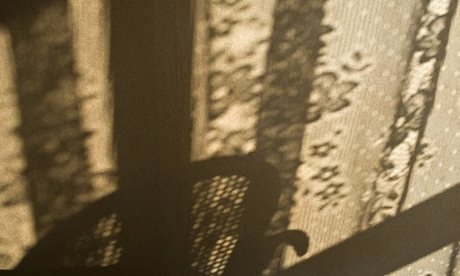
Credit: Beatriz Ruibal
After artist Beatriz Ruibal lost her mother, Carmen, she discovered that her grief was painful and slow. Two years later, every inanimate object in Ruibal’s home became a reminder of her mother’s death, and Ruibal found that she couldn’t escape from the thousands of memories that clung to every room, every wall, every ceiling and every thread of fabric.
Rather than pushing these thoughts to the side, Ruibal decided to document them in painstaking detail through her photography series, “Mother.” Each photograph is a stark portrayal of her mother’s possessions, yet they each have a deeper, hidden meaning for the artist. Ruibal approaches each object like a stranger would, taking simple photographs from above to show every detail of every piece. It’s not until you read Ruibal’s story that you catch a glimpse of the bittersweet emotions at play.
Take her photograph “Mother 3.” On the surface, it’s just a bed with clean-pressed sheets and an ornate headboard. But when you look deeper into what that bed means for Ruibal, you begin to understand the turmoil of grief. This is not just a bed to her. This is where her mother spent thousands of hours dreaming. When Ruibal looks at this bed, she remembers the person who used to occupy it — its emptiness is something that the artist feels whenever she glances at it. The bed has the power to drive a daughter to tears.

Credit: Beatriz Ruibal
This is the crux of Ruibal’s “Mother” series. It’s a way to show her audience what it’s like to cope with the death of a loved one, even if they have never experienced that kind of loss themselves. Grief isn’t a one-time event that you eventually get over with time. You relive it all over again whenever you’re reminded of your loved one. The most common triggers for many people are the objects that their loved ones once held dear.
Even basic objects like a chair or a tube of lipstick become sacred after their owners have died. A daughter might trace the waxy groove marks in her mother’s lipstick, remembering the care and pride she took in applying it. We often hold onto these objects for years, fearing that giving them up would mean giving up a living piece of our loved ones lives.

Credit: Flickr.com
In this sense, Ruibal also provides a source of relief for grieving families. She teaches us that photographs can bring back those powerful memories that we crave. Looking at these objects through her camera lens, she captures the obsessive detail that many of us seek out, allowing us to see our grief as it truly is.
Each fleck of dirt becomes an important piece of history and a gateway into a loved one’s life. When taken as a whole, these seemingly-mundane objects remind us of the day-to-day lives of the people we’ve lost. These are usually the first memories to go; we remember the big moments, like graduations and marriages, yet we forget those minor details that make people who they truly are. With this photo series, Ruibal does the seemingly impossible: She recaptures the whole person as she really was.

 When Everyday Objects Become Sacred
When Everyday Objects Become Sacred


 “Hand to Earth” by Andy Goldsworthy
“Hand to Earth” by Andy Goldsworthy
 Trans Remembrance Project Provides a Community of Grieving
Trans Remembrance Project Provides a Community of Grieving
 Caring for a Dying Loved One? Be Gentle With Yourself.
Caring for a Dying Loved One? Be Gentle With Yourself.














